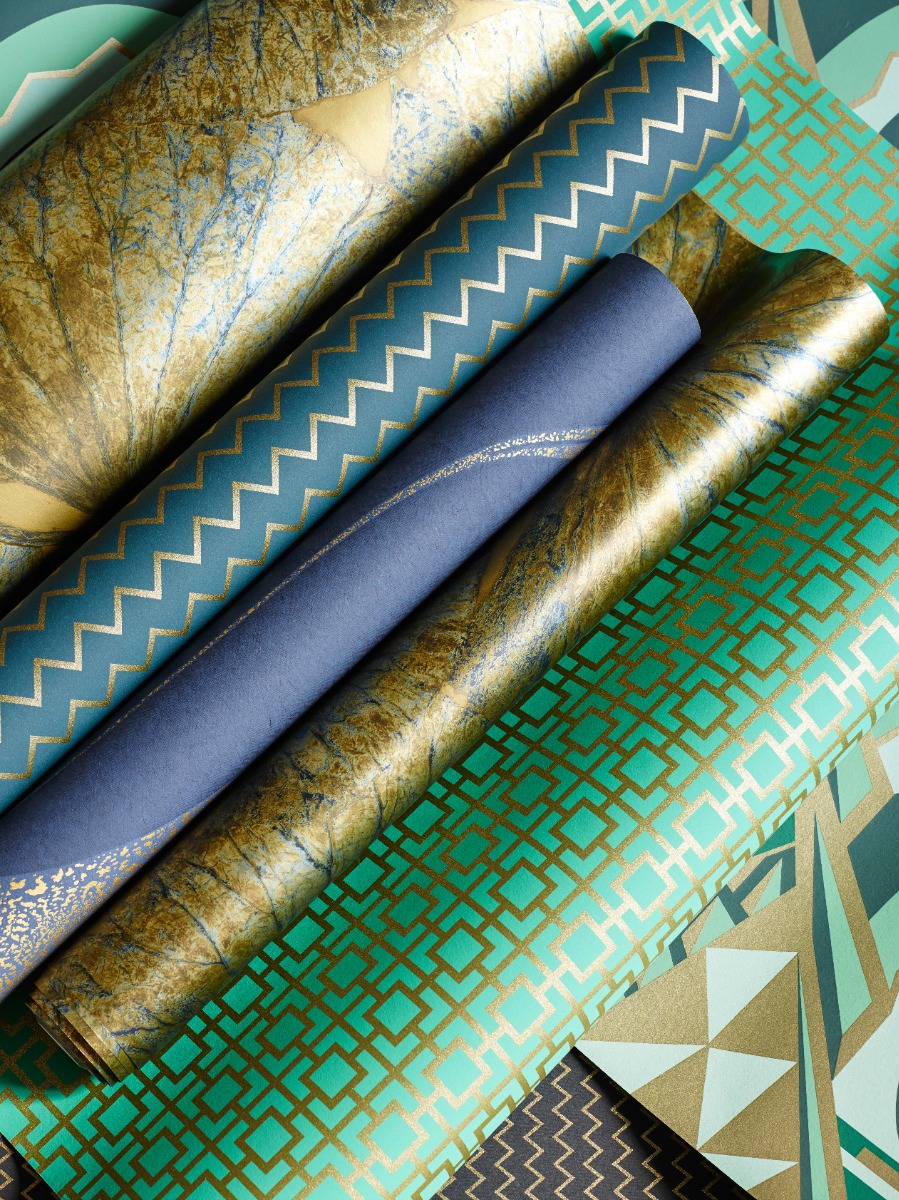
You will need
- Spray bottle
- Wallpaper liquid stripper solution
- Broad brush
- Wallpaper scraping tool
- Knife
- Sandpaper
- Wallpaper steamer*
- Sponge
- Bucket
- Cloth
*We have provided guides for two methods below - with and without a wallpaper steamer.
Generally, wallpaper steamers are better for large areas of wallpaper or stubborn wallpaper, including woodchip. Chemical stripping solution is perfect for smaller areas such as feature walls.
Preparation
Clear the room as much as possible and cover any furniture, fixtures and fittings from liquid you are using and falling wallpaper.
Identify the type of walls you have under the wallpaper either plaster or drywall - plaster walls are much more solid than drywalls so be careful when using a scraping tool on drywalls.
Understand the type of wallpaper you are stripping as newer wallpapers tend to be more strippable and some are even peelable. Peelable wallpapers will leave a backing on the wall which you will need to remove using the same process as wallpaper. Older wallpaper and washable wallpapers might not absorb water as well, making it more difficult to remove and you might need a wallpaper steamer.
Please carefully read the below safety measures before you start:
- Always keep chemicals and adhesives out of reach of children.
- Always use a suitable ladder when working at height, and ensure it is secure.
- Safety goggles should be worn when stripping wallpaper to protect eyes from falling paper, debris, chemicals and hot water.
- Turn off the electricity in the room in case of water or steam getting into electrical sockets or switches.
- If you have any light switches on the wall, you may need to loosen or remove the faceplates to allow you to remove any wallpaper that is stuck behind them. The faceplates might clip off or they may be fixed with retaining screws which you will need to loosen with a screwdriver. Before you do this, you should turn off the mains power at the fuse box/consumer unit or completely isolate the circuit you are working on.
- Protect any switches and sockets from debris and drips with masking tape and plastic sheeting.
Removing wallpaper without a steamer
Step 1
Mix your wallpaper stripper liquid with water as per the manufacturer's instructions.
Step 2
Apply the mixture to the walls with a broad brush or spray bottle. Start at the bottom and work your way up to the top - section at a time.
Step 3
Let the paper soak in the liquid for a few minutes then using a scraping tool start to remove it.
Step 4
Carefully repeat until all your wallpaper is removed.
Tip - For challenging sections of wallpaper which won't absorb the liquid score the surface with sandpaper / knife / scoring tool to make it easier to fully soak through the paper. Apply multiple coats of liquid and leave the paper for longer until it is easy to remove.
Removing wallpaper with a steamer
A steamer is a wallpaper removal tool that will use boiling water to soften the paste between the wallpaper and the wall. You can rent a steamer instead of purchasing one if you don't plan on using it regularly. We always recommend you carefully read the manufacturer's instructions when using a steamer. We would always recommend stripping wallpaper without a steamer if it's not necessary.
Step 1
Prepare the steamer as per the instructions.
Step 2
Place the stripper pad firmly on the wallpaper for about 30 seconds and when you remove the pad the wallpaper should now be loosened.
Step 3
Then you will be able to remove the wallpaper with a scraping tool.
Step 4
Carefully repeat until all your wallpaper is removed.
Clean and prepare walls for redecorating
Once you have removed all wallpaper, clean the wallpaper with a sponge and bucket of water. Then dry the wall with a cloth and leave to dry completely.
If you are left with any stubborn wallpaper paste on the wall, use a wallpaper stripper solution to remove the residue. Let it sit for the recommended time as per the product instructions. Scrape of the residue until it has completely gone with a stripping knife.
Identify any areas of the wall surface which have been damaged and repair. This may be as simple as sanding the area or may require you to fill any holes.
Once you've completed all of these steps, you're ready to hang your new wallpaper. Our how-to guide will talk you through the steps of adding new wallpaper so you get a professional finish.
